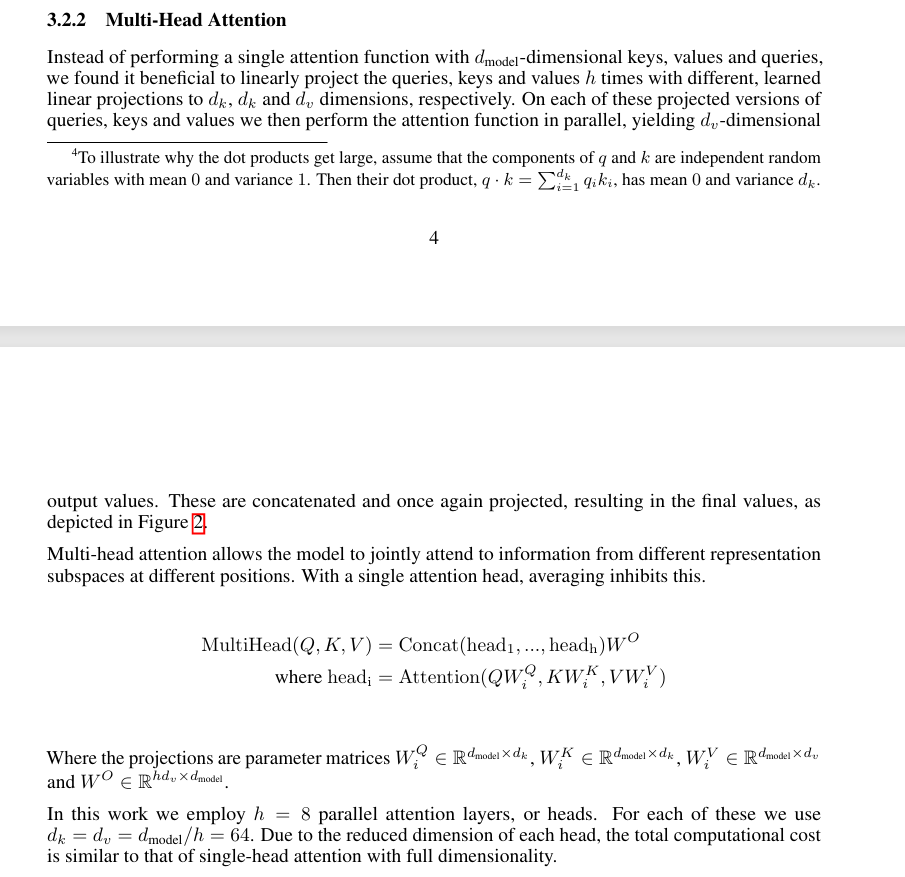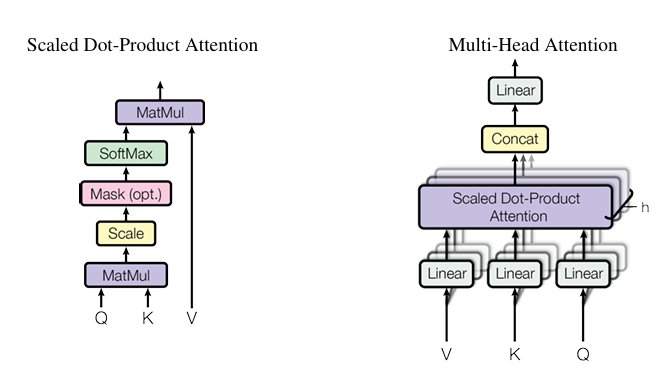论文中关于多头注意力的描述


代码实现
python
import torch
import torch.nn as nn
import torch.nn.functional as F
import math
class MultiHeadAttention(nn.Module):
def __init__(self, d_model, num_heads):
super(MultiHeadAttention, self).__init__()
self.d_model = d_model
self.num_heads = num_heads
self.d_k = d_model // num_heads
assert d_model % num_heads == 0, "d_model must be divisible by num_heads"
# Linear projections for Q, K, V
self.W_q = nn.Linear(d_model, d_model)
self.W_k = nn.Linear(d_model, d_model)
self.W_v = nn.Linear(d_model, d_model)
self.W_o = nn.Linear(d_model, d_model)
def scaled_dot_product_attention(self, Q, K, V, mask=None):
# Q, K, V: (batch_size, num_heads, seq_len, d_k)
scores = torch.matmul(Q, K.transpose(-2, -1)) / math.sqrt(self.d_k)
if mask is not None:
scores = scores.masked_fill(mask == 0, float('-inf'))
attn = F.softmax(scores, dim=-1)
return torch.matmul(attn, V)
def split_heads(self, x, batch_size):
# x: (batch_size, seq_len, d_model)
x = x.view(batch_size, -1, self.num_heads, self.d_k) # (batch_size, seq_len, num_heads, d_k)
return x.transpose(1, 2) # (batch_size, num_heads, seq_len, d_k)
def combine_heads(self, x, batch_size):
# x: (batch_size, num_heads, seq_len, d_k)
x = x.transpose(1, 2).contiguous() # (batch_size, seq_len, num_heads, d_k)
return x.view(batch_size, -1, self.d_model) # (batch_size, seq_len, d_model)
def forward(self, Q, K, V, mask=None):
batch_size = Q.size(0)
Q = self.W_q(Q) # (batch_size, seq_len, d_model)
K = self.W_k(K)
V = self.W_v(V)
Q = self.split_heads(Q, batch_size) # (batch_size, num_heads, seq_len, d_k)
K = self.split_heads(K, batch_size)
V = self.split_heads(V, batch_size)
attn_output = self.scaled_dot_product_attention(Q, K, V, mask)
output = self.combine_heads(attn_output, batch_size)
return self.W_o(output) # Final linear projection会发现其实代码和论文不是完全一样的,论文看起来是每个头有单独的W去乘,但是代码里是所有头共用W再拆分。其实两者是等价的。要注意一下,在multi-head attention中,输入是不被拆分的,它的shape一直是[L,D_model],拆分的是W,把[D_model, D_model]的矩阵拆分成K个[D_k, D_model]的矩阵。
根据矩阵的乘法定义
Y = X W = X [W₁ W₂] = [X W₁ X W₂]乘之前拆分还是乘之后拆分,是一样的。代码用大矩阵来乘,可以加快计算。